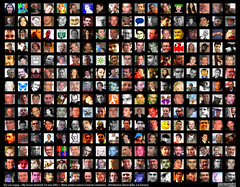The Future of Hiring New Employees

This post originally appeared on Forbes.com.
Technology and data are changing the ways companies do business but perhaps more interestingly is the way they are influencing how companies are hiring, and could be hiring, new employees. In many organizations the human resource department is considered the most important part of the organization. And rightfully so. A company is nothing more than the people within it so it should be no surprise when you hear about how rigorous some hiring processes are. For example, its been said that Google has had candidates come in to interview “as many as 16 times before ultimately releasing them back to the wild.”
So let’s take a look at three new and innovate concepts that may help drive the future of how companies are staffed.
The Social Graph. It’s not what you know but who you know. We’ve all heard this phrase before but we finally have social graphs that are accessible through technology. These are social graphs and social connections that will at some point be used to help us as individuals in our careers. So imagine how powerful it would be if companies could leverage one’s social network to get personal references at scale. A company called Jibe is doing this and their employers have said that Jibe candidates are 4x more likely to be hired than those from traditional job boards. And it makes complete sense. Personal references are invaluable and its why 92% of hiring managers in 2010 used social networks as a recruiting tool, according to CareerEnlightenment.com.
Statistical Data Models. If data exhaust was actually smoke we would all be suffocating by now. The abundance of raw data is staggering and making sense of it all can be a daunting task. It is the reason new cloud computing based companies are starting to emerge. But capturing and understanding data is very different than taking actionable steps from the findings. There is a new school of thought among firms that look to statistical models as the basis by which candidates are hired. For example, every company has an associated cost with hiring and training a new employee. The cost of hiring this new employee is recouped if that person stays for a certain period of time. If however that candidate leaves before that time, the firm realizes a loss in opportunity costs. So what if you could predict with a high level of probability that a candidate will stay beyond a certain period of time? What if you could essentially predict which candidates are retention risks? Well this is what one, stealth-mode Chicago firm is working on and their results could end up saving firms millions of dollars annually in their hiring process.
Niche Data Sets. Hiring a math teacher is very different than hiring a quantum mechanics physicist. As the world continues to slice itself up into niche verticals, it will also be important to have niche data sets especially for the purpose of hiring highly specialized candidates for very specific roles. This is probably the reason why LinkedIn (NASDAQ: $LNKD) has seen its biggest growth in revenue come from its hiring solutions line of business. This is also probably part of the reason why LinkedIn has subtly added new fields like “skills” into profile pages. These fields make it easier for recruiters and hiring managers to look for people with very specific skill sets. And just as the ladders.com tailored to folks looking to make over $100k, I believe there is also an opportunity to specialize on other niche verticals like B2B sales, pharmaceuticals, nuclear engineering, and many, many more.
New solutions will continue to emerge but I think we are beginning to see the future of how new firms will hire employees.


![Reblog this post [with Zemanta]](https://img.zemanta.com/reblog_e.png?x-id=ac8fef2e-6a7b-4b0d-94d3-517be6279e5d)
![Reblog this post [with Zemanta]](https://img.zemanta.com/reblog_b.png?x-id=f933a4f8-35c1-4807-8e24-4714cb07cdda)
![Reblog this post [with Zemanta]](https://img.zemanta.com/reblog_b.png?x-id=348403a2-b70e-4214-b649-f6194324255e)
![Reblog this post [with Zemanta]](https://img.zemanta.com/reblog_e.png?x-id=06799282-9876-43d1-9340-631983f8b4aa)

![Reblog this post [with Zemanta]](https://img.zemanta.com/reblog_e.png?x-id=9b895310-5bcc-4a8d-bb36-cf273b3b2ffb)

![Reblog this post [with Zemanta]](https://img.zemanta.com/reblog_e.png?x-id=fc53107e-2c49-4409-bdc9-a12738af44d4)

![Reblog this post [with Zemanta]](https://img.zemanta.com/reblog_e.png?x-id=a856dc17-bdca-4fed-92f6-56bb6a9c3d41)